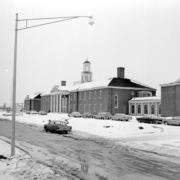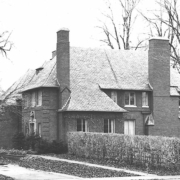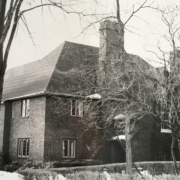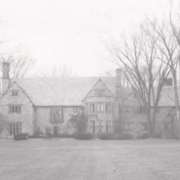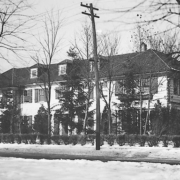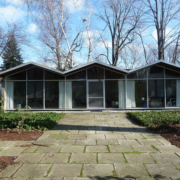Historical Architecture of Grosse Pointe – 1013 Cadiuex
Last week we reviewed 457 Lake Shore, the splendid home of Roy D. Chapin, who commissioned John Russell Pope to design a grand estate on Lake Shore in 1927.
This week we jump forward to 1959, to look at one of Grosse Pointe’s modern properties, 1013 Cadieux, created by prominent modern architect, William Kessler, for himself and his family. The Kessler family often referred to the house as “the chateau on Cadieux”.
1013 Cadieux is a 1,700 sq ft one-of-a-kind modern style residence. The house is constructed from a light-steel frame; with floor to ceiling glass panels on the front and rear elevations, and brick-built end walls. The roof is comprised of a distinctive three-bay folded plate roof. The exterior of the home also features a privacy wall, constructed of gray brick with a textured surface, to help maintain the outdoor space as a private courtyard. An article in Architectural Record 1961, features the Kessler House on the front cover, describing the residence as “a lot of house for a low budget”. The article states the house was designed with comfort, privacy, spaciousness, and style in mind, with what was at the time a modest budget – it is reported the cost to purchase the land and construct the house was $30,000 (around $250,000 today). Image courtesy of the Library of Congress.

The main entrance features a purple doorway with large sidelights. A flat-roof breezeway covers the main entrance, while a wall along the rear of the breezeway is clad with painted plywood (added some years after construction was complete). Attached to the wall is an art installation consisting of brightly colored circular glass disks. The piece was designed by Kessler in 2001 and provides a wonderful focal point when entering the house. The residence comprises of a single-story nearly square floor plan (measuring 39 ft by 42 ft) that is divided into three distinctive parts referred to as ‘bays’. The ‘bays’ correspond to the position of the peaked sections in the folded-plate roof. The large windows at the front and rear of the property fill the home with natural light and provide a perfect view of the private courtyard and rear garden. Michiganmodern.org describes the configuration of rooms as being ‘an open floor plan but designed to have some degree of separation between the public and private spaces’. The free-flowing floor plan has the living room, dining room/family room, and the main bedroom located at the front of the house. The rear of the property is the location of two further bedrooms and a play area, along with access to the backyard. The bedrooms are grouped together on one side of the house and separated from the main living space by a plaster partition. Meanwhile, the kitchen and the two bathrooms are grouped together in the center of the home. The kitchen is open to both the living room and the dining/family room and features a sky dome light in the sloping ceiling. The ceiling throughout the property is lined with naturally finished cedar planks. Image’s courtesy of Realtor.com
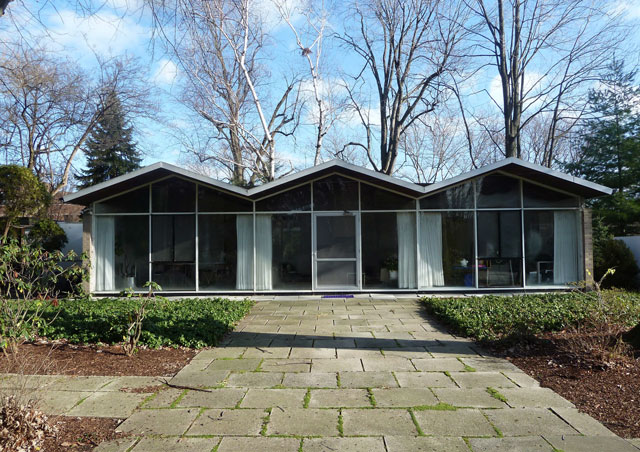
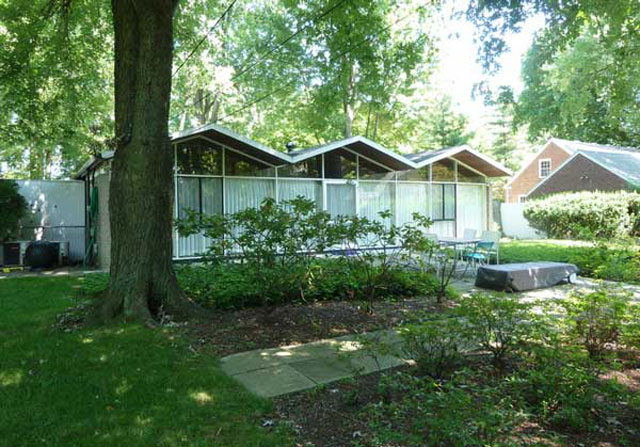

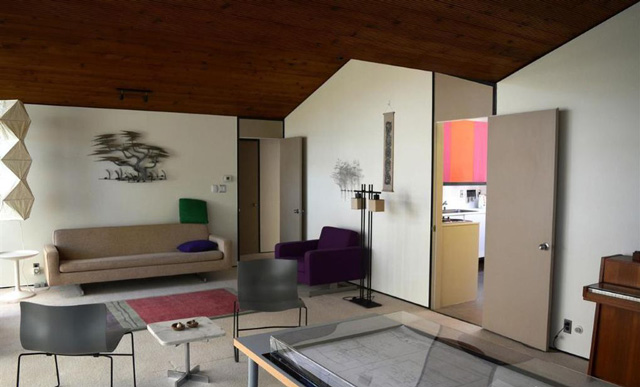

It is believed Kessler designed the interior to meet the modern flair of the exterior. While much of the furniture was custom designed for the house (it is reported Kessler designed several pieces himself), Kessler also choose many iconic Danish modern designs from that era. Much of the decor was painted in vivid accent colors – such as orange, plum, green and yellow – to decorate the cupboard doors in the kitchen. Several years after 1013 Cadieux was completed Kessler designed a two-vehicle carport with a flat roof, added in 1964. Image’s courtesy of Realtor.com
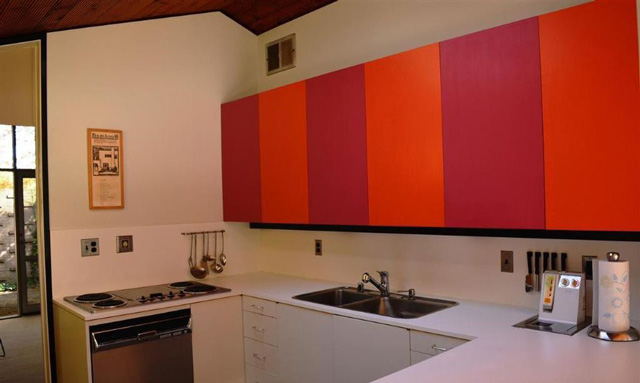
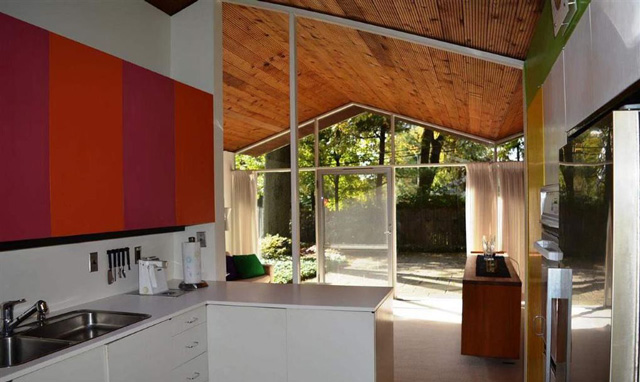
William Kessler was born in Reading, Pennsylvania in 1924. After leaving high school he attended the Chicago Institute of Design (organized in 1937, as the New Bauhaus). During his education Kessler enlisted in the army during World War II where he trained as a pilot in Nebraska. After the war ended Kessler married his childhood sweetheart Margot Walbrecker. He then returned to Chicago to finish his education, graduating in 1948. Kessler continued his education at Harvard, studying under two major pioneers of the modern movement, R. Buckminster Fuller and Walter Gropius – the world-famous architect and founder of the Bauhaus. Walter Gropius taught at the Harvard Graduate School of Design from 1937, through to 1952. It is reported Gropius asked William Kessler, upon graduation (in 1950), to stay on as an instructor, which he did for a year. After leaving Harvard Kessler was hired by the firm of Minoru Yamasaki – best known for designing the World Trade Center and the Michigan Gas Building. Kessler moved to Michigan to join Yamasaki Associates, headquartered in Detroit. It appears Kessler had only intended to work in Michigan for a few years, however he remained in the state for the rest of his life.
Having worked with Yamasaki for around four years, Kessler and director of production for Yamasaki, Phil Meathe, departed to form their own firm in 1955. Meathe, Kessler and Associates was quickly recognized for its innovative, modern designs. After forming the firm with Meathe, Kessler designed his new home, 1013 Cadieux. At the time Kessler was heavily focused on the triangular form. It is reported the design of the house evolved from some of the influences Kessler had learned while working with Yamasaki. However, the property clearly demonstrates characteristics Kessler had developed for his own modernist style. Source: Michiganmodern.org. In 1968, Kessler and Meathe dissolved their partnership. Phil Meathe joined the firm of Smith, Hynchman and Grylls, becoming president of the firm several years later. Meanwhile, William Kessler started his own firm (William Kessler and Associates) focusing on single-family homes, college and university buildings, and hospitals. That same year (in 1968) Kessler was elected to the College of Fellows of the American Institute of Architects (AIA) for his outstanding contributions to the profession. The firm went on to receive over fifty awards from the AIA. Below are a few examples of Kessler’s work. Images are courtesy of the Library of Congress.
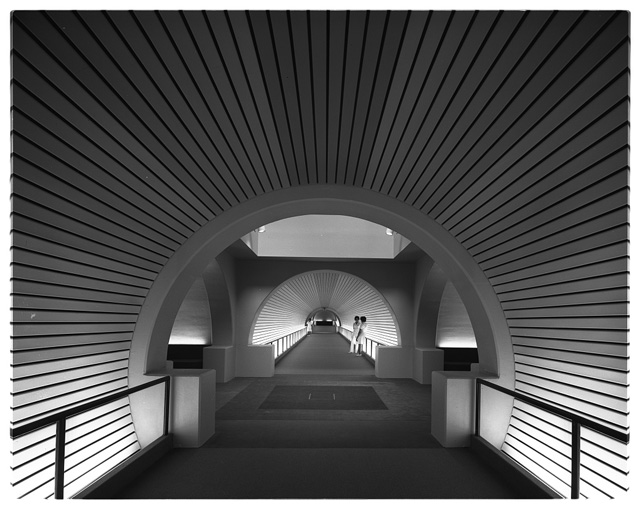
Detroit Receiving Hospital Medical Center

Olivet College Collegiate Center
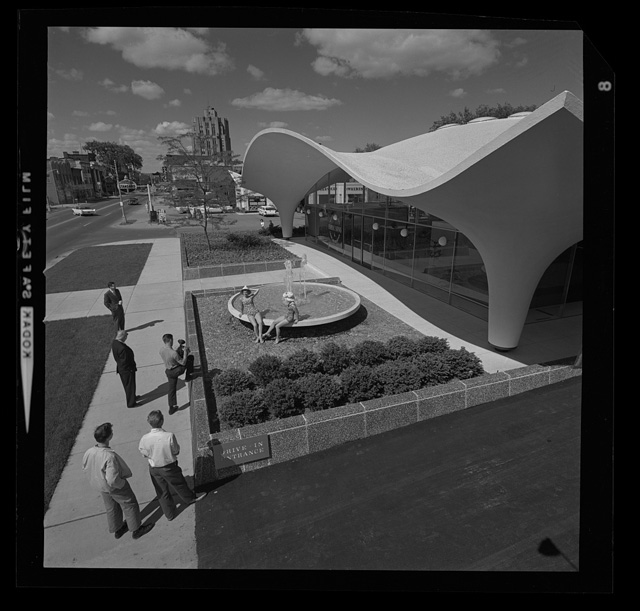
Exterior of the Mount Clemens Savings and Loan Building
William Kessler died in 2002. His wife Margot resided at 1013 Cadieux until her death in 2009. Since the property was built it is reported only minor changes have been made to the interior, mainly consisting of replacement of floor finishes.
1013 Cadieux is a superb example of modern architecture. During his life Kessler was associated with some of the true pioneers of the modern movement and has been referred to as one of Detroit’s greatest modernists.
*Photos courtesy of the Higbie Maxon Agney archives unless stated.
Written by Katie Doelle
Copyright © 2021 Katie Doelle



